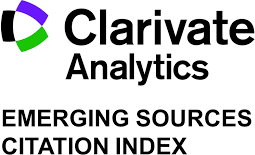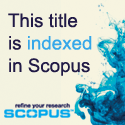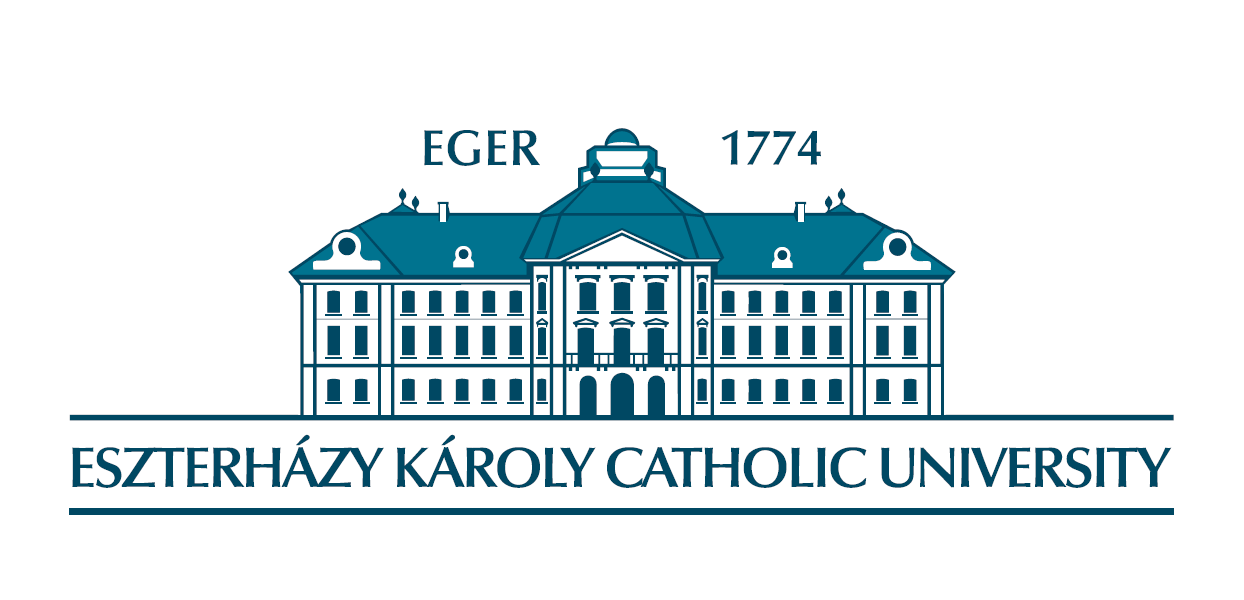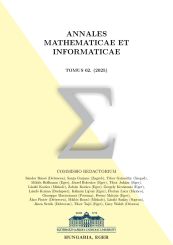ISSN 1787-6117 (Online)
Content
Research papers
Approximation by de La Vallée Poussin type matrix transform of Vilenkin-Fourier series
by István Blahota
Pages: 1–25
DOI: 10.33039/ami.2025.06.002
Corrigendum: An unusual cubic representation problem
by Andrew Bremner, Allan Macleod
Pages: 26–27
DOI: 10.33039/ami.2025.10.022
On tridimensional balancing numbers and some properties
by José Chimpanzo, Paula Catarino, M. Victoria Otero-Espinar
Pages: 28–45
DOI: 10.33039/ami.2025.04.001
Cubics and conics geodesically associated to the points of a geometric surface
by Mircea Crasmareanu
Pages: 46–54
DOI: 10.33039/ami.2025.11.002
Quantitative strong laws of large numbers for random variables with double indices
by István Fazekas, Nyanga Honda Masasila
Pages: 55–65
DOI: 10.33039/ami.2025.09.002
Hosszú type functional equations on Lie algebras
by Tamás Glavosits, József Túri
Pages: 66–76
DOI: 10.33039/ami.2025.03.003
There are no k-Pell numbers expressible as products of two Fermat numbers
by Alioune Gueye, Salah Eddine Rihane, Alain Togbé
Pages: 77–90
DOI: 10.33039/ami.2025.05.001
On the Sum of Divisors function of linearly recurrent sequences
by Florian Luca, Makoko Campbell Manape
Pages: 91–98
DOI: 10.33039/ami.2025.03.002
Parameter identification in a simple chemostat model using neural networks
by Anes Moulai-Khatir
Pages: 99–115
DOI: 10.33039/ami.2025.10.019
Plancherel formula for the attenuated Radon transform
by Tibor Ódor, Enikő Dinnyés
Pages: 116–122
DOI: 10.33039/ami.2024.07.001
Comparative analysis of homomorphic encryption schemes for encrypted image processing in OpenStack using TenSEAL
by Hekmat Saker, Farid Eyvazov, Tariq Emad Ali, Csaba Biró, Dhulfiqar Zoltán Alwahab
Pages: 123–142
DOI: 10.33039/ami.2025.09.001
Unit group of semisimple group algebra of groups of order 36
by Diksha Upadhyay, Harish Chandra
Pages: 143–155
DOI: 10.33039/ami.2025.10.014
Corrigenda to the paper “Infinitary superperfect numbers”
by Tomohiro Yamada
Pages: 156–157
DOI: 10.33039/ami.2025.06.001
Methodological papers
Mathematics teachers’ beliefs about primary school students’ mathematical attitudes
by Peter Csiba, Zoltán Fehér, Ladislav Jaruska, Szilárd Svitek, Miklós Vontszemű
Pages: 158–170
DOI: 10.33039/ami.2025.03.001
The application of cooperative group work and APOS Theory in topic of logarithms
by Ágota Figula, Emese Kása
Pages: 171–208
DOI: 10.33039/ami.2025.11.003
On rational decimal numbers for lower secondary mathematics teachers
by Pentti Haukkanen, Timo Tossavainen
Pages: 209–222
DOI: 10.33039/ami.2025.11.001









